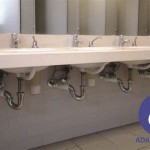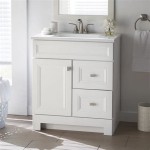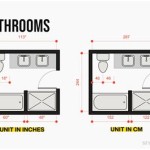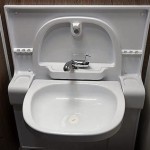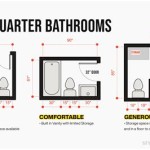Bathroom Ceiling Light Regulations
Bathroom safety is paramount, and electrical wiring plays a crucial role. Lighting fixtures, in particular, require specific regulations to ensure safe and reliable operation. Bathroom ceiling light regulations are designed to protect individuals from electrical hazards and ensure proper illumination for everyday activities. These regulations vary by jurisdiction, but common principles apply across the board.
Understanding the regulations is essential for homeowners, builders, and electricians. When working on bathroom lighting, it is vital to adhere to these standards to prevent potential risks. This article will delve into the key aspects of bathroom ceiling light regulations, highlighting important considerations for safety and compliance.
1. Wet Locations and Electrical Codes
Bathrooms are classified as "wet locations" by electrical codes due to the presence of moisture and potential for water splashes. This classification necessitates specific electrical safety measures for fixtures and wiring to prevent electric shock or fire hazards. The National Electrical Code (NEC) in the United States, and similar regulations in other countries, outline detailed requirements for wet locations.
The NEC mandates the use of "wet-rated" fixtures designed to withstand moisture and prevent water ingress. These fixtures are typically built with sealed housings and waterproof components. Additionally, wiring in bathroom areas requires specific types of cable designed for wet environments, such as armored cable (BX) or cable rated for damp or wet locations.
2. GFCI Protection for Safety
Ground fault circuit interrupters (GFCIs) are essential safety devices designed to prevent electrical shock. They work by monitoring the flow of electricity in a circuit and immediately tripping the circuit if a ground fault is detected. In bathrooms, GFCI protection is mandatory for outlets and lighting fixtures, ensuring increased safety for users.
The NEC requires a dedicated GFCI outlet for bathroom lighting fixtures. This outlet acts as the primary point of GFCI protection for the circuit. In some cases, a GFCI breaker installed in the electrical panel may also provide protection for the bathroom lighting circuit. However, a dedicated GFCI outlet directly upstream of the fixture is the most common practice, providing the highest level of protection.
3. Fixture Placement and Height
The placement and height of bathroom ceiling lights also have specific regulations. The NEC, along with local building codes, may specify minimum distances from fixtures to tubs, showers, and other water sources. These guidelines are designed to prevent accidental contact with live electrical components and reduce the risk of electrocution.
Generally, bathroom ceiling lights should be placed at a height that provides adequate illumination without creating glare. The recommended height for bathroom ceiling lights is typically 8 to 10 feet above the floor level. Furthermore, fixtures located above tubs or showers should be placed further away to minimize the risk of water contact.
4. Light Fixture Types and Ratings
Bathroom ceiling lights come in various styles and designs, but not all fixtures are suitable for wet locations. It is crucial to select light fixtures specifically rated for use in bathrooms or wet locations. These fixtures are designed to handle condensation, humidity, and occasional water splashes, ensuring safe and reliable operation.
Some common types of bathroom ceiling lights include recessed lights, flush-mount fixtures, and pendant lights. Recessed lights are often preferred due to their sleek design and efficient use of space. However, they should be installed by a qualified electrician and require proper insulation around the housing to prevent heat buildup. Flush-mount fixtures offer a more traditional look and are suitable for bathrooms of various sizes. Pendant lights can be used to create a statement, but they require a higher ceiling height and must be installed securely.
5. Installation and Maintenance
The installation of bathroom ceiling lights should always be performed by a qualified electrician. They will ensure that the wiring, connections, and fixture are properly installed in accordance with local electrical codes and safety standards. Improper installation can lead to electrical hazards, including shocks, fires, and malfunctioning fixtures.
Regular maintenance is essential for the safe and efficient operation of bathroom ceiling lights. This includes cleaning the fixtures and checking for signs of damage or wear. If any damage is detected, it's crucial to contact a qualified electrician immediately. They can assess the situation, repair or replace the fixture, and ensure the safety of your bathroom environment.

Bathroom Lighting Zones Explained Ip Ratings Ip65 Ip68 Ip44

Bathroom Lighting Zone Guide Better Bathrooms

What Are Bathroom Lighting Zones A Guide To Regulations Moonlight Design

Bathroom Lighting Zones And Regulations Explained Downlights Direct Advice News

What Are Bathroom Lighting Zones A Guide To Regulations Moonlight Design

Bathroom Lighting Zones And Regulations Explained

Bathroom Lighting Zones Explained

A Guide To Bathroom Lighting And Regulations Brilliant

Bathroom Lights Downlights Wall Boscolighting

Bathroom Light Zones Lighting Ip Ratings Explained
Related Posts


